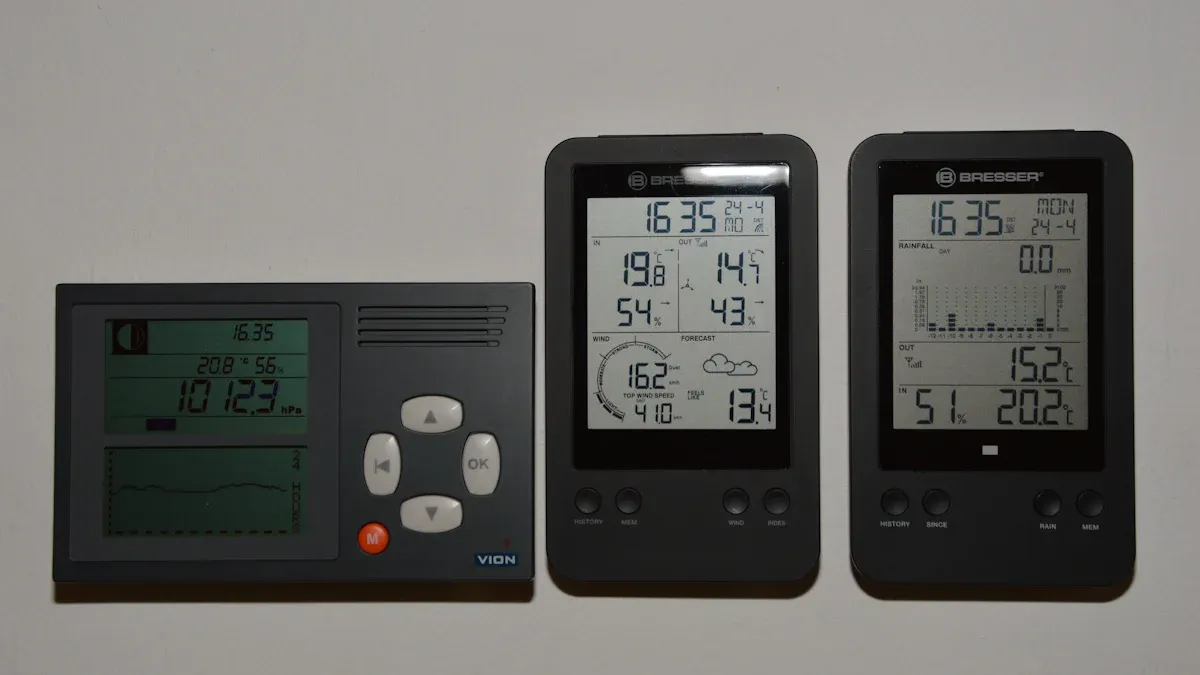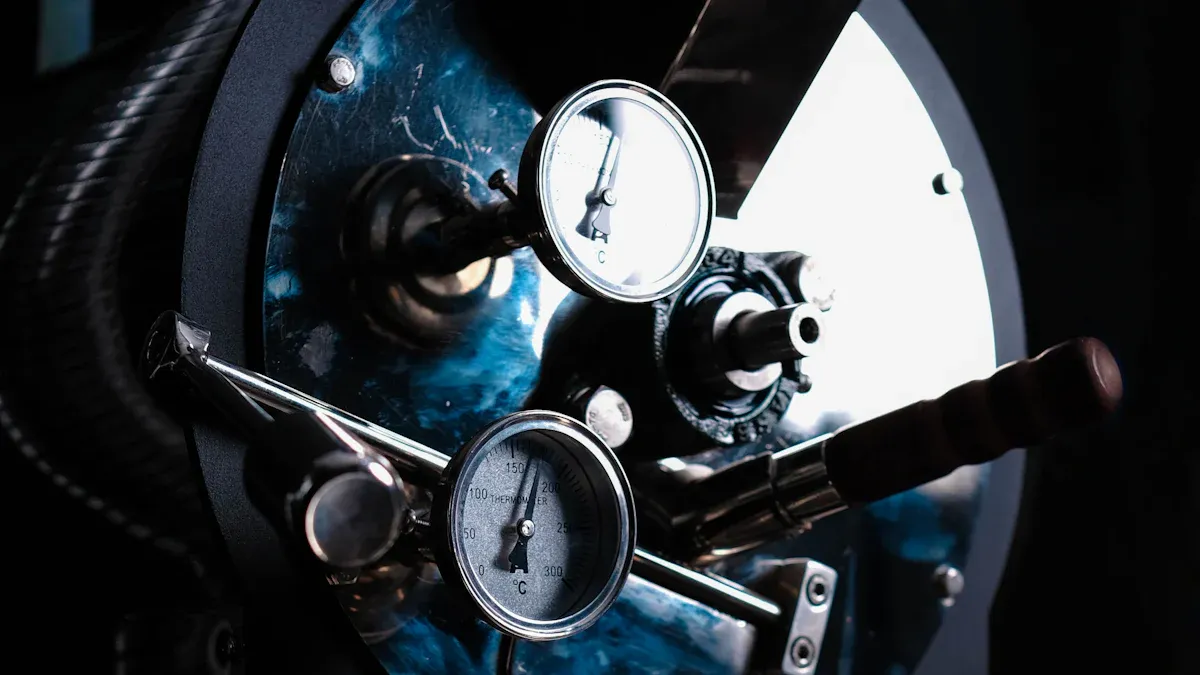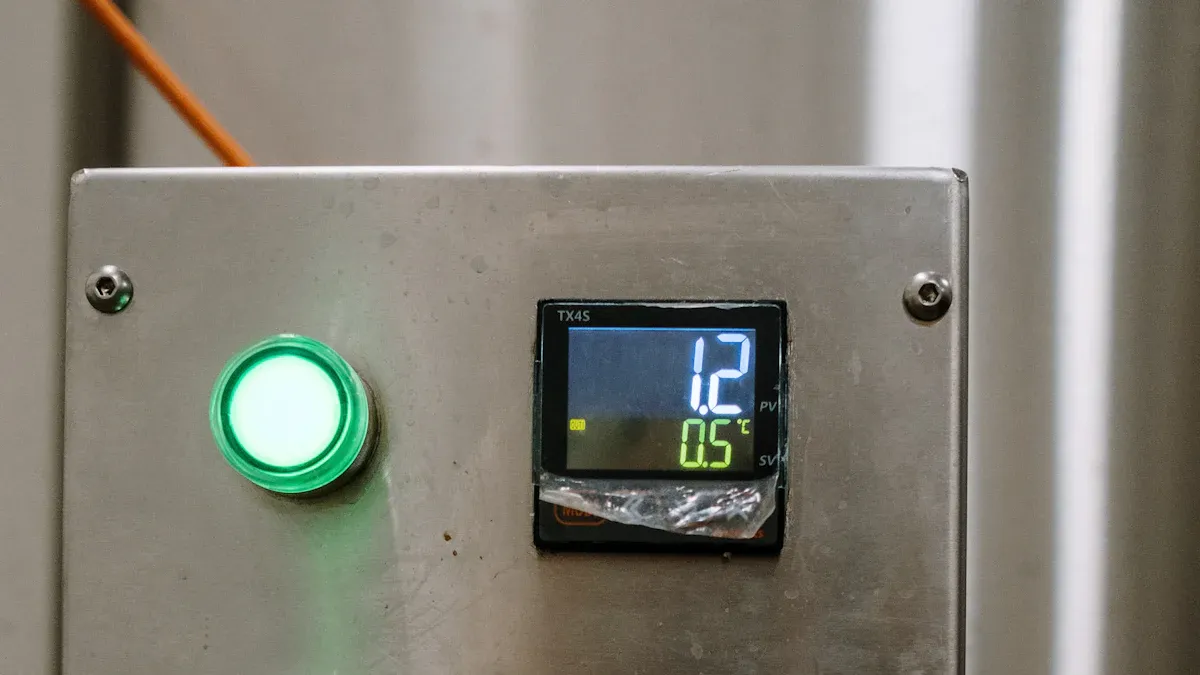
High-low temperature controllers play a crucial role in Korean factories by maintaining precise environmental conditions. These devices ensure consistent operational efficiency and superior product quality. Industries such as electronics, automotive, and food processing rely heavily on accurate temperature regulation to meet stringent production standards and deliver reliable, high-performance products.
Key Takeaways
- High-low temperature controllers help keep factory temperatures steady. This ensures good product quality and smooth operations.
- Using energy-saving temperature controllers can cut power bills and help the environment.
- Taking care of these controllers and using them correctly makes them work better and avoids expensive breakdowns.
Understanding High-Low Temperature Controllers

What Are High-Low Temperature Controllers?
High-low temperature controllers are advanced devices designed to regulate and maintain specific temperature ranges in industrial environments. These controllers ensure that equipment operates within optimal conditions, preventing overheating or freezing. They are essential for processes requiring precise temperature control, such as in furnaces, refrigeration systems, and manufacturing lines.
Key components of these controllers include:
- Measured input indicators: Display real-time temperature readings.
- Setpoint controllers: Generate control signals based on the difference between actual and desired temperatures.
- Sensors: Devices like thermocouples and RTDs (Resistance Temperature Detectors) that measure temperature accurately.
- Control elements: Components such as heaters or valves that adjust the temperature as needed.
By integrating these features, high-low temperature controllers provide unmatched precision and reliability, making them indispensable in industries like electronics, automotive, and food processing.
How They Work in Industrial Applications
High-low temperature controllers operate using sophisticated mechanisms to maintain desired temperature levels. A common method involves PID (Proportional-Integral-Derivative) control, which uses a feedback loop to regulate temperature effectively. The process begins with sensors measuring the current temperature. The controller compares this value to the setpoint and sends signals to heating or cooling units to adjust accordingly.
| Feature | Description |
|---|---|
| Control Mechanism | PID controllers use a feedback loop to regulate temperature and other process variables. |
| Application | Commonly used in industrial control systems for temperature regulation in various processes. |
| Functionality | Adjusts heating and cooling units based on set temperature to maintain desired output. |
| System Characteristics | Best suited for systems with small mass and quick response to energy changes. |
This seamless integration of sensors, controllers, and control elements ensures consistent performance. High-low temperature controllers enhance efficiency and product quality, making them a cornerstone of modern industrial operations.
Importance of High-Low Temperature Controllers in Korean Factories

Key Industries Benefiting from Temperature Control
Several industries in Korea rely on precise temperature regulation to maintain operational efficiency and product quality. The electronics sector, for instance, requires stable thermal conditions during the production of semiconductors and circuit boards. Even minor temperature fluctuations can compromise the integrity of these components, leading to costly defects.
The automotive industry also benefits significantly from advanced temperature control systems. The global automotive climate control market reached USD 11.2 billion in 2024 and is projected to grow to USD 17.9 billion by 2033, with a CAGR of 5.06% from 2025 to 2033. This growth highlights the increasing demand for precise climate control in vehicle manufacturing, where processes like paint application and engine testing depend on consistent thermal environments.
In food processing, maintaining specific temperatures ensures product safety and quality. High-low temperature controllers help prevent spoilage and contamination, meeting stringent regulatory standards. These industries demonstrate the critical role of temperature control in achieving operational excellence.
Challenges Without Effective Temperature Regulation
Factories without effective temperature regulation face numerous challenges. Equipment overheating or freezing can lead to frequent breakdowns, increasing maintenance costs and downtime. Inconsistent temperatures may also result in defective products, tarnishing a company’s reputation and reducing customer trust.
Moreover, energy inefficiency becomes a significant concern. Without precise control, heating and cooling systems may consume excessive energy, driving up operational costs. High-low temperature controllers address these issues by providing reliable and energy-efficient solutions, ensuring factories operate smoothly and sustainably.
Features, Benefits, and Implementation
Key Features: Precision, Reliability, and Energy Efficiency
High-low temperature controllers offer three standout features that make them indispensable in industrial settings. Precision ensures accurate temperature regulation, critical for processes requiring tight tolerances. Advanced sensors and PID control mechanisms enable these controllers to maintain consistent thermal conditions. Reliability minimizes downtime by preventing equipment failures caused by temperature fluctuations. Robust designs and high-quality components enhance durability, even in demanding environments.
Energy efficiency is another defining feature. These controllers optimize heating and cooling systems, reducing energy consumption and operational costs. For instance, adaptive control algorithms adjust power usage based on real-time temperature data, ensuring sustainable operations.
Tip: Investing in controllers with energy-efficient designs can significantly lower utility expenses while supporting eco-friendly practices.
Benefits: Cost Savings and Improved Product Quality
Factories using high-low temperature controllers experience substantial cost savings. Precise temperature control reduces waste by minimizing defective products. Reliable operation decreases maintenance expenses and prevents costly downtime. Energy-efficient systems further contribute to financial savings by lowering electricity bills.
Improved product quality is another major benefit. Consistent thermal conditions ensure uniformity in manufacturing processes, enhancing the durability and performance of finished goods. Industries like electronics and food processing rely on these controllers to meet stringent quality standards.
Best Practices for Implementation and Maintenance
Proper implementation and maintenance maximize the effectiveness of high-low temperature controllers. During installation, technicians should calibrate sensors to ensure accurate readings. Controllers must be integrated seamlessly with existing systems to avoid compatibility issues.
Regular maintenance is essential for long-term performance. Cleaning sensors and inspecting control elements prevent malfunctions. Periodic software updates keep controllers operating at peak efficiency.
Note: Scheduling routine inspections can help identify potential issues early, reducing repair costs and ensuring uninterrupted operations.
High-low temperature controllers play a pivotal role in optimizing efficiency, ensuring product quality, and reducing costs in Korean factories. Their precision and reliability make them indispensable across industries.
Call to Action: Businesses should integrate these controllers into their operations to achieve sustainable growth and maintain a competitive edge in today’s demanding industrial landscape.
FAQ
What industries benefit the most from high-low temperature controllers?
Electronics, automotive, and food processing industries gain the most from these controllers. They ensure precise temperature regulation, improving product quality and operational efficiency.
How do high-low temperature controllers save energy?
These controllers optimize heating and cooling systems using advanced algorithms. They adjust power usage based on real-time data, reducing energy consumption and operational costs.
Are high-low temperature controllers difficult to maintain?
No, they are easy to maintain with regular inspections. Cleaning sensors and updating software ensure optimal performance and prevent potential malfunctions.
Tip: Schedule routine maintenance to extend the lifespan of your temperature controllers and avoid unexpected downtime.
Post time: Mar-26-2025





